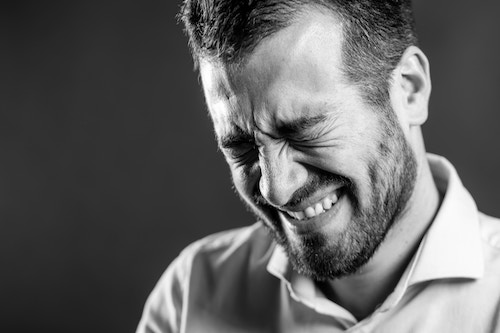Photo by Andrea Bertozzini on Unsplash
unpolished thoughts 4/20/2019
I like to carry out experiments with my body.
That’s a completely different idea than stretching or strengthening, doing some kind of exercise.
But there is one aspect of what I’m doing that is similar to what people who focus on stretching and strengthening are pursuing.
I do these things to improve myself.
My strategy is to improve how well I know myself.
Warts and all.
I give myself little tasks to do and then try to relate to myself in such a way that I can both be in the activity as the doer, but also be outside the activity as the witness.
For example, I may slowly close my eyes and then open them again.
How do I do that?
I don’t know. I just do it. I do it all the time without thinking about it. It’s as if it just happens.
Except when I do it intentionally.
Then I give myself the opportunity to observe myself and notice things that I never notice.
It’s funny. When I close my eyes, it turns out that I close the right eye a little more tightly than the left eye. The more times I repeat the movement the more obvious it becomes.
And if I try to “correct myself”, I discover that to close the two eyes with a symmetrical effort is actually very difficult for me.
But I’ve learned a trick. I can play with the asymmetries to produce an experience that is slightly more symmetrical.
So, first I exaggerate the bias I already feel. I close both eyes many times, but now I deliberately close the right eye more than the left – not by a lot.
The movement is still very gentle, but I make it my intention to do the movement asymmetrically.
In fact, it’s more accurate to say that I’m doing a different movement now that I have changed the intention. By paying attention to my sensations, I can confirm this is true.
Whenever I make an experiment like this, in addition to the movement I make, I also always pay attention to my breathing – because the quality of my breath always tells me something about the amount of effort I’m using.
If I’m truly present to myself it will also immediately tell me that there when there is a subtle difference between two similar things that I do, which action involves a droplet more effort than the other.
Noticing these differences helps me to know myself better.
Noticing these differences helps me to feel myself better.
Knowing and feeling myself more clearly opens the road to infinite potential.
So, after some time, I stop and listen to the sensations of resting after this intentionally biased movement.
Keep in mind that the bias was something that was already inside myself. I just exaggerated it a little bit.
In the next stage of the experiment, I explore a bias that I did not find in myself, an internal pattern that is more foreign to me.
Now I close the eyes many times, intentionally closing the left eye more than the right.
Almost immediately, I feel my breath become more forced. I have to make the movement many times to teach myself how to breathe evenly while I make this non-habitual movement.
I’m teaching myself something vitally important. I’m expanding my own definition of who I am.
Despite the progress I make, it’s still simpler for me to emphasize closing the right eye over the left. But now I’m curious to learn what’s different about the two sides. Maybe one side of myself can teach the other side.
So I close my eyes – softly, slowly – many times. I listen not only to the muscles that move my eyelids, but also my breathing.
As I repeatedly close and open my eyes, I alternate between emphasizing one eye then the other, until I sense that the two movements feel more similar to each other.
I check for symmetry or asymmetry in other places too, such as the sensations that occur in the sides of my neck or the changing distances of imaginary strings that connect my ears to the tops of my shoulders.
All these other subtleties inform my understanding of what I do with my eyes and the game of symmetry that I play.
I could do another whole round of experiments like this where my focus would be on the opening of my eyes. (I’ve already noticed that when I open my eyes, I tend to open one eye slightly before the other.)
There was a time where these kinds of experiments actually made me feel very anxious. I was not prepared for the internal experiences that they produced.
From time to time, this still happens, but now I know what to do. After all, these are my experiments, so I’m always in control of how deeply I investigate.
Sometimes I can tell that it’s not a good moment for it, and I just leave it alone. That too is part of my process of getting to know myself better.
On the whole, I find that these experiments open one door after another for me. It’s not what any one experiment does (even though, at times, the change I feel is truly sensational).
The more important shift in my life experience comes from the practice of going continually deeper into the process of self-study.
Because the better I know myself, the clearer I become in every thought, every action. Even my mistakes get clearer – and every mistake is the potential basis for a new experiment.
